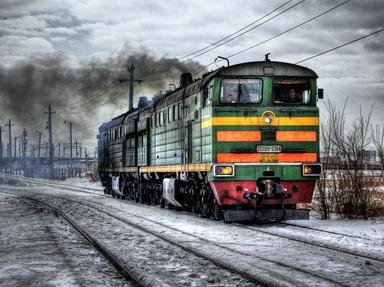Quiz Answer Key and Fun Facts
1. What was the main limiting factor in Japan from developing its own "bullet train"?
2. The first trip of a Shinkansen train took place on 1 October 1964, ten days before the beginning of which landmark event in Japan's post-war history?
3. The Shinkansen had some unique technological breakthroughs that facilitated high speed. These trains were electrical multiple units (EMU). What does this mean in terms of powertrain?
4. A challenge when building the first Shinkansen line between Tokyo and Osaka (515 km/320 mi) was the mountainous terrain between the two cities. How many tunnels needed to be constructed?
5. True or False: The Shinkansen travels so fast that there is an automated system in place to relay speed information from the track to the driver since the driver has no time to read signals.
6. In 1964, the Series 0 bullet train smashed the time for the 515 km (320 mi) rail journey between Tokyo and Osaka, taking just four hours (previously it was six hours forty minutes). How long did it take the Series N700S in 2020 to cover this distance?
7. Which of these facts about the mini-Shinkansen lines is NOT true?
8. Which of the following possible safety features has NOT contributed to a fatality-free first 55 years of Shinkansen operation?
9. The Shinkansen celebrated its 50th anniversary in 2014. What was the extent of the network at the time?
10. In 2011, The Japanese government approved new technology that would facilitate the train journey from Tokyo to Osaka in 67 minutes. What type of technology had been approved?
Source: Author
1nn1
This quiz was reviewed by FunTrivia editor
trident before going online.
Any errors found in FunTrivia content are routinely corrected through our feedback system.
